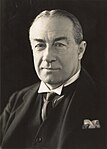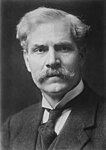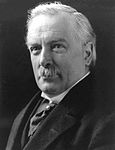
Back যুক্তরাজ্যের সাধারণ নির্বাচন, ১৯৩১ Bengali/Bangla Všeobecné volby ve Spojeném království 1931 Czech Parlamentsvalget i Storbritannien 1931 Danish Britische Unterhauswahl 1931 German Elecciones generales del Reino Unido de 1931 Spanish Élections générales britanniques de 1931 French הבחירות הכלליות בבריטניה 1931 HE Elezioni generali nel Regno Unito del 1931 Italian 1931年イギリス総選挙 Japanese 1931년 영국 총선 Korean
| |||||||||||||||||||||||||||||||||||||||||||||||||||||||||||||||||||||||||||||||||||||||||||||||||||||||||||||
All 615 seats in the House of Commons 308 seats needed for a majority | |||||||||||||||||||||||||||||||||||||||||||||||||||||||||||||||||||||||||||||||||||||||||||||||||||||||||||||
|---|---|---|---|---|---|---|---|---|---|---|---|---|---|---|---|---|---|---|---|---|---|---|---|---|---|---|---|---|---|---|---|---|---|---|---|---|---|---|---|---|---|---|---|---|---|---|---|---|---|---|---|---|---|---|---|---|---|---|---|---|---|---|---|---|---|---|---|---|---|---|---|---|---|---|---|---|---|---|---|---|---|---|---|---|---|---|---|---|---|---|---|---|---|---|---|---|---|---|---|---|---|---|---|---|---|---|---|---|---|
| Turnout | 76.4% ( | ||||||||||||||||||||||||||||||||||||||||||||||||||||||||||||||||||||||||||||||||||||||||||||||||||||||||||||
| |||||||||||||||||||||||||||||||||||||||||||||||||||||||||||||||||||||||||||||||||||||||||||||||||||||||||||||
 Colours[clarification needed] denote the winning party—as shown in § Results | |||||||||||||||||||||||||||||||||||||||||||||||||||||||||||||||||||||||||||||||||||||||||||||||||||||||||||||
 Composition of the House of Commons after election | |||||||||||||||||||||||||||||||||||||||||||||||||||||||||||||||||||||||||||||||||||||||||||||||||||||||||||||
| |||||||||||||||||||||||||||||||||||||||||||||||||||||||||||||||||||||||||||||||||||||||||||||||||||||||||||||
The 1931 United Kingdom general election was held on Tuesday, 27 October 1931. It saw a landslide election victory for the National Government, a three-party coalition which had been formed two months previously after the collapse of the second Labour government.[1] Journalist Ivor Bulmer-Thomas described the result as "the most astonishing in the history of the British party system".[2]
Unable to secure support from his cabinet for his preferred policy responses to the economic and social crises brought about by the Great Depression, Prime Minister Ramsay MacDonald split from the Labour Party and formed a new national government in coalition with the Conservative Party and a number of Liberals. MacDonald subsequently campaigned for a "Doctor's Mandate" to do whatever was necessary to fix the economy, running as the leader of a new party called National Labour within the coalition. Disagreement over whether to join the new government also resulted in the Liberal Party splitting into three separate factions, including one led by former Prime Minister David Lloyd George.
Collectively, the parties forming the National Government won 67% of the popular vote and 554 (90.1%) of 615 seats in the House of Commons. Although the bulk of the National Government's support came from the Conservative Party, which won a majority in its own right with 470 seats, MacDonald remained Prime Minister. The Labour Party suffered its greatest ever defeat—losing four-fifths of its seats, including the seat of leader Arthur Henderson—and became the official opposition with just 52 MPs. The collapse of the Liberals into competing factions also ended their time as a significant force in British politics; the breakaway National Liberals were eventually absorbed into the Conservatives in 1947, while the main Liberal Party would spend the next half-century in the political wilderness until its revival in the 1970s.
It is the most recent election in which any single party (the Conservatives) received an absolute majority of the votes cast, and the last UK general election not to take place on a Thursday. It was also the last election until 1997 in which any single party won more than 400 seats.
Cite error: There are <ref group=note> tags on this page, but the references will not show without a {{reflist|group=note}} template (see the help page).





